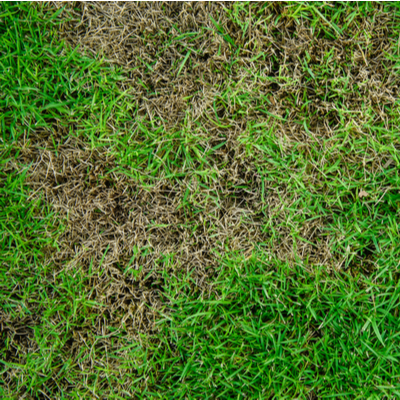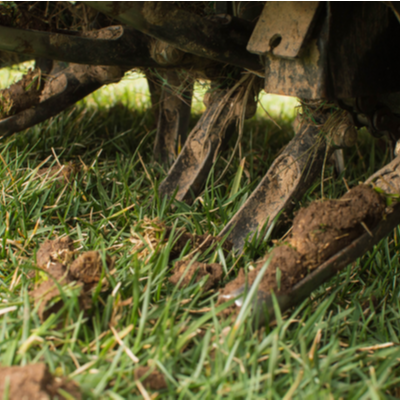Florida homeowners have to constantly deal with the threat of invasive weeds and destructive lawn diseases. At Lawn Master, we want to help educate our community about common lawn diseases that affect Florida lawns. By being able to spot and prevent lawn diseases you won’t have to waste money on fighting them. This way, we can do our part to help combat the spread of diseases such as take-all root rot.
What is Take-All Root Rot?
Take-all root rot is a fungal disease that causes root decline in warm-season grasses such as Bermudagrass, St. Augustine, and centipede grass. The disease is triggered by stressed grass and the high rainfall we receive in the summer and early fall months. Take-all root rot thrives in wet areas or conditions that keep the roots saturated. Take-all rot is especially common in coastal regions of the state where lots of rain and sandy soils are prevalent.
Identifying Take-All Root Rot
Since we are dealing with a root rot disease, you may not notice the initial stages of the disease. The pathogen damages the roots and prevents the turfgrass from obtaining water or nutrients from the soil efficiently. Take-all root rot also disrupts photosynthesis and the plant’s ability to produce food. By the time the first visible symptoms appear, the disease has been at work for at least a few weeks or longer.
Aboveground symptoms appear as shapeless, yellow, or light green patches of grass that range in diameter from a few inches to a few feet.
Below ground, the roots become very short and off-white. Dark lesions may appear on the roots and the root may begin to rot. Eventually, the roots rot and the entire plant may die. This will leave behind irregular patches of dead and thinning grass that is vulnerable to weeds and other diseases.
Controlling and Preventing Take-All Rot
Once aboveground symptoms present themselves, it is very difficult to control take-all root rot.
That is why we always recommend taking measures that prevent or mitigate disease or, at least, lower the chances for lasting damage.
Mowing
Continue to follow your regular mowing schedule. Just make sure that you are only cutting one-third of the top of the grass. Cutting too low can stress the plant, especially during hot and dry weather.
Do Not Overwater
Check your automatic irrigation systems carefully. Water early and let the water sink in deep. Do not let your grass remain wet into the night.
Aerate Your Lawn
Aerating your lawn can reduce soil compaction and improve soil drainage. Lawn aeration is one of the best things you can do for your lawn.
Reduce Herbicide Stress
St. Augustine grass is known to be especially sensitive to herbicides. Herbicides can stress St. Augustine grass and make it vulnerable to take-all rot and weeds.
Correct Soil pH
Soils are different in every part of your lawn. Soils that have a pH balance of 7 or higher are considered alkaline and can exacerbate take-all rot symptoms. You can reduce the alkaline levels in your soil by adding sphagnum peat, elemental sulfur, aluminum sulfate, iron sulfate, acidifying nitrogen, and organic mulches
Get Lawn Care From The Pros At Lawn Master
Sometimes, fighting lawn diseases is best left to the professionals. At Lawn Master, we have been improving the quality of lawns in our community for over 30 years. We know that every yard is unique and we treat them that way. When you sign up for our lawn care service you can rest assured that you are going to receive the best care with the best products.
Fill out our form online or give us a call at 850-476-1601. Learn more about us by following us on our Facebook page and get more tips and ideas right at your fingertips! We hope to talk to you soon.